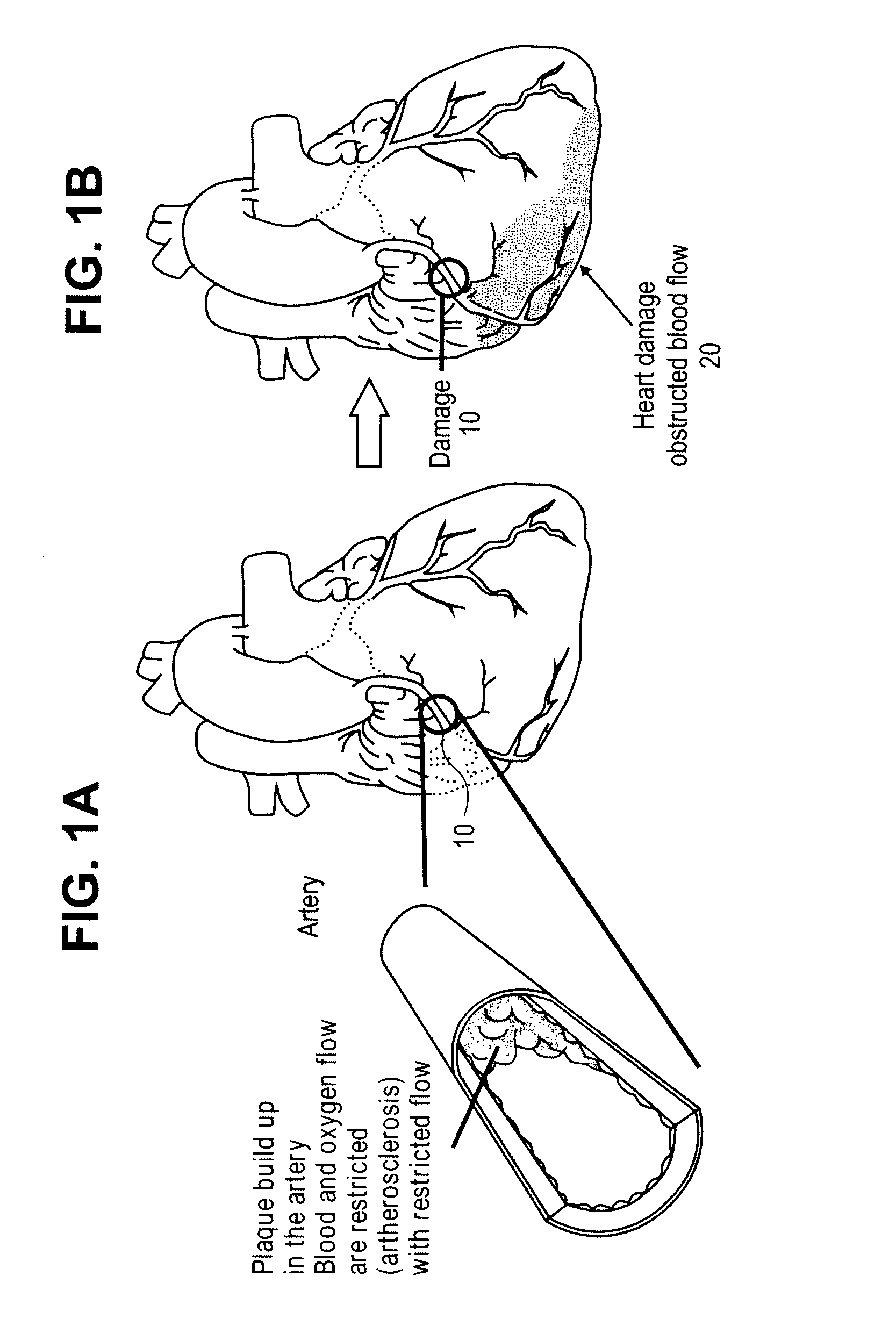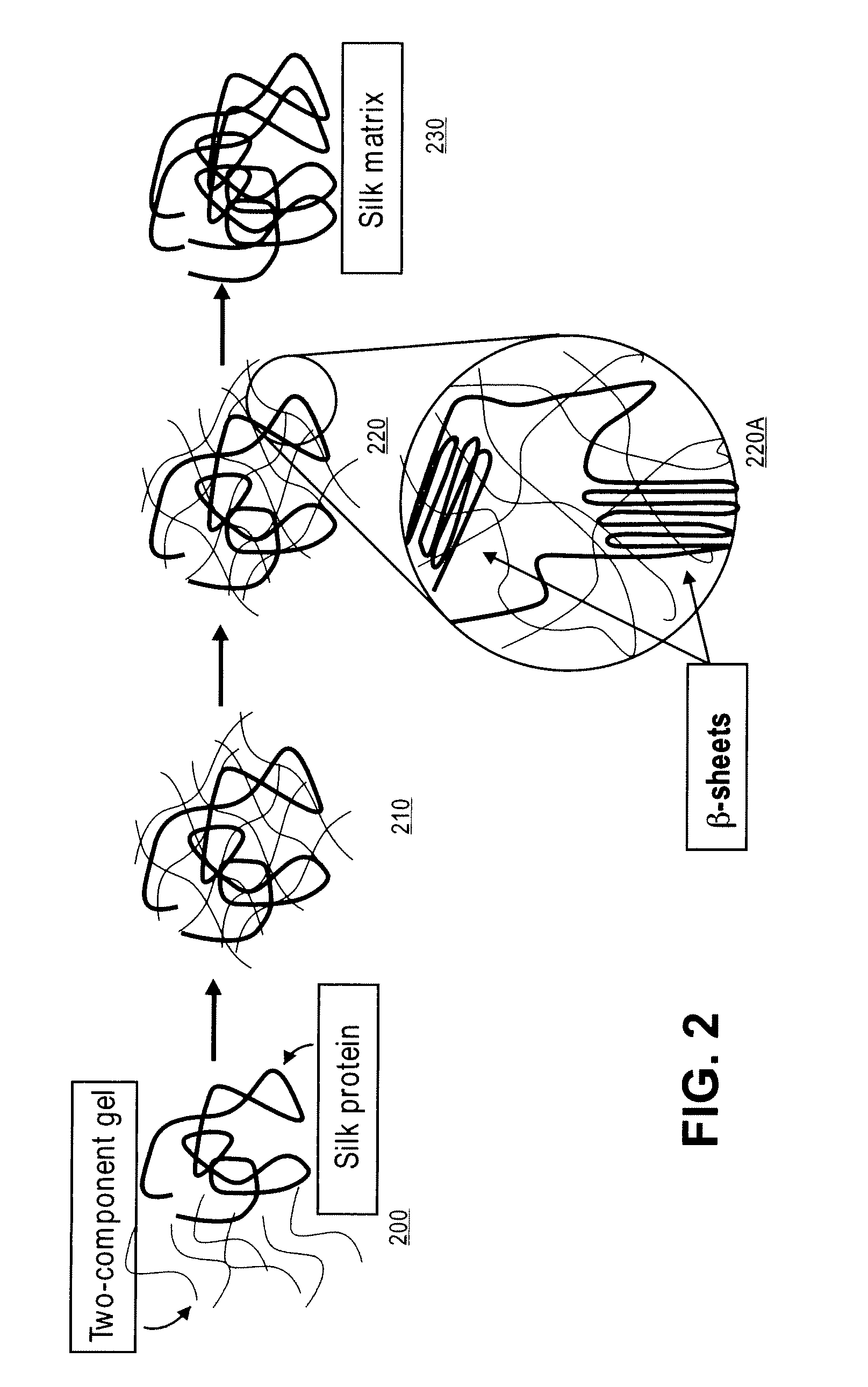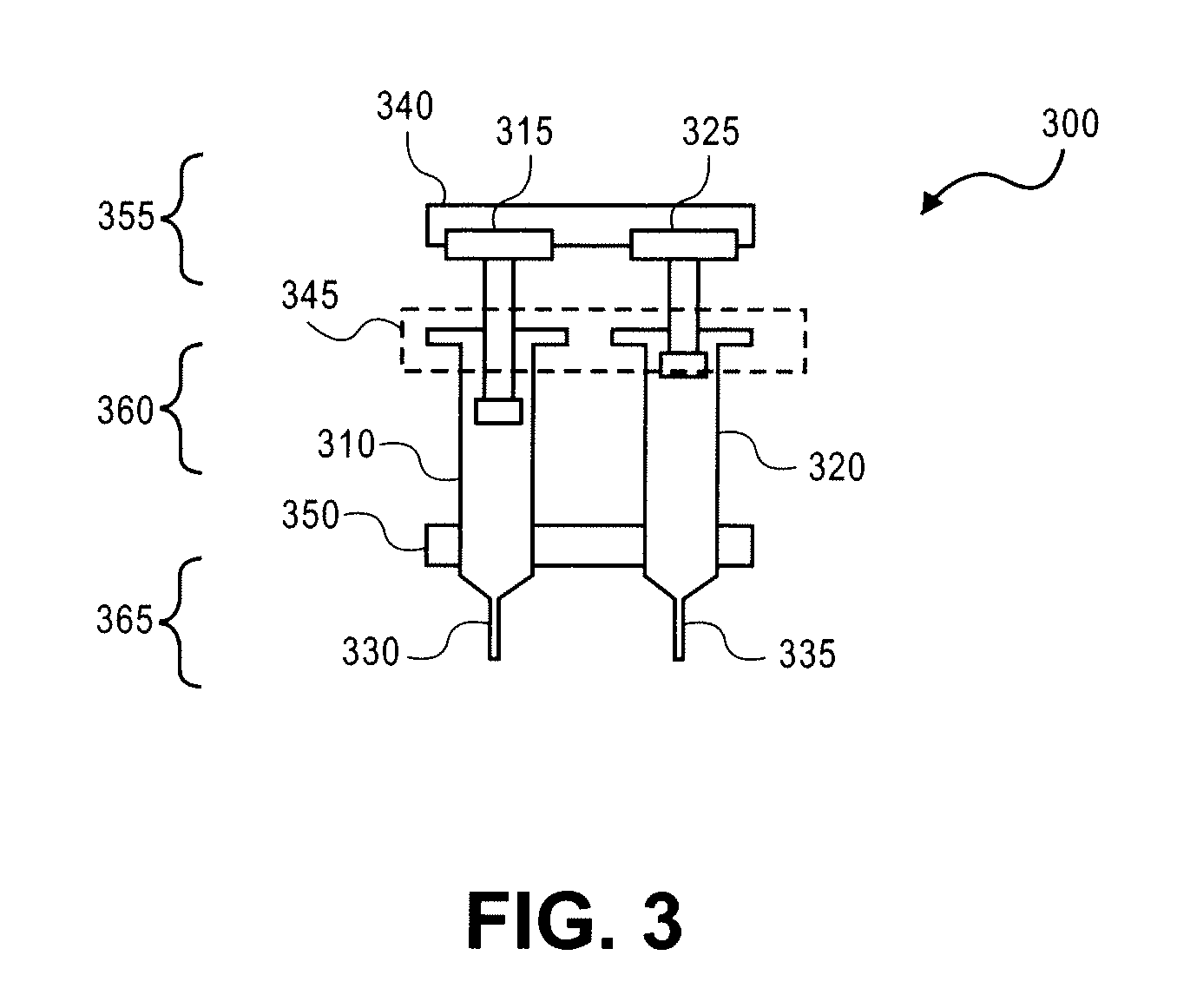Methods and compositions for treating tissue using silk proteins
a technology of silk proteins and compositions, applied in the direction of drug compositions, prostheses, peptides, etc., can solve the problems of blood clotting in the artery, and affecting the function of the myocardium
- Summary
- Abstract
- Description
- Claims
- Application Information
AI Technical Summary
Benefits of technology
Problems solved by technology
Method used
Image
Examples
example 1
[0036]A first component is a 10% solution of PEG thiol in carbonate and / or phosphate buffer adjusted to pH between 8 and 9. The buffer can be between 140 mM and 160 mM. The PEG thiol can be PTE-200SH, molecular weight 20,000 kD available from NOF corporation, Japan. A second component is a 10% to 13% solution of PEG NHS in phosphate buffer at physiological pH. The PEG NHS can be PTE-200GS, molecular weight 20,000 kD available from NOF corporation, Japan. The amount of oligomer component in solution can vary from 2% to 20% by weight, however stoichiometry between the first component and the second component should be close to 1:1 to assure reaction between the components. An aqueous solution of silk protein (synthetic or non-synthetic) can be added to the first component for a final concentration of 50 mg / mL. The aqueous silk protein solution should be kept at between 3° C. and 9° C., preferably between 4° C. and 8° C. Prior to addition of the aqueous silk protein to the first compon...
example 2
[0037]A first component is a 10% solution of PEG amine in carbonate or phosphate buffer adjusted to pH between 8 and 9. The buffer can be between 140 mM and 160 mM, preferably 150 mM. The PEG amine can be PTE-200PA, molecular weight 20,000 kD available from NOF corporation, Japan. A second component is a 10% to 13% solution of PEG NHS in phosphate buffer at physiological pH. The PEG NHS can be PTE-200GS, molecular weight 20,000 kD available from NOF corporation, Japan. The amount of oligomer component in solution can vary from 2% to 20% by weight, however stoichiometry between the first component and the second component should be close to 1:1 to assure reaction between the components. An aqueous solution of silk protein (synthetic or non-synthetic) can be added to the first component for a final concentration of 50 mg / mL. The aqueous silk protein solution should be kept at between 3° C. and 5° C., preferably 4° C. Prior to addition of the aqueous silk protein to the first component...
example 3
[0038]A first component is a 10% solution of PEG thiol in carbonate or phosphate buffer adjusted to pH between 8 and 9. The buffer can be between 140 mM and 160 mM. The PEG thiol can be PTE-200SH, molecular weight 20,000 kD available from NOF corporation, Japan. A second component is a 4% to 5% solution of PEG diacrylate in phosphate buffer. The PEG diacrylate can be poly(ethylene glycol) diacrylate, molecular weight 4000 kD available from Polysciences, Inc., Pennsylvania, U.S.A. The amount of oligomer component in solution can vary from 2% to 20% by weight, however stoichiometry between the first component and the second component should be close to 1:1 to assure reaction between the components. An aqueous solution of silk protein (synthetic or non-synthetic) can be added to the first component for a final concentration of 50 mg / mL. The aqueous silk protein solution should be kept at between 3° C. and 9° C., preferably between 4° C. and 8° C. Prior to addition of the aqueous silk p...
PUM
| Property | Measurement | Unit |
|---|---|---|
| mass percent | aaaaa | aaaaa |
| pH | aaaaa | aaaaa |
| pH | aaaaa | aaaaa |
Abstract
Description
Claims
Application Information
 Login to View More
Login to View More - R&D
- Intellectual Property
- Life Sciences
- Materials
- Tech Scout
- Unparalleled Data Quality
- Higher Quality Content
- 60% Fewer Hallucinations
Browse by: Latest US Patents, China's latest patents, Technical Efficacy Thesaurus, Application Domain, Technology Topic, Popular Technical Reports.
© 2025 PatSnap. All rights reserved.Legal|Privacy policy|Modern Slavery Act Transparency Statement|Sitemap|About US| Contact US: help@patsnap.com



